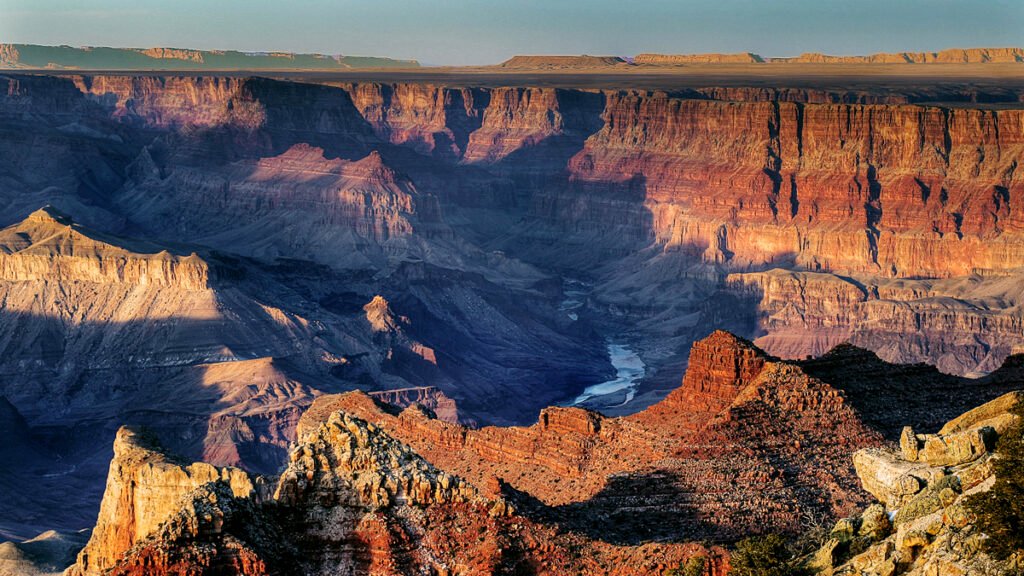Discover the wonders of Grand Canyon National Park, Arizona. Learn about its history, biodiversity, attractions, activities, accommodations, weather, tips, and conservation efforts in this comprehensive guide.
Table of Contents
Introduction to the Park
Grand Canyon National Park, located in Arizona, is one of the most iconic natural landmarks in the United States. Spanning 277 miles of the Colorado River, the park’s immense size and stunning vistas attract millions of visitors each year. Known for its geological significance and breathtaking landscapes, the Grand Canyon offers a unique opportunity to witness the natural beauty and rich history of the American Southwest. Whether you’re an adventurer, a history buff, or a nature lover, the Grand Canyon has something for everyone.
History and Background
The Grand Canyon has a rich history that dates back millions of years. Formed by the erosive power of the Colorado River, the canyon reveals layers of rock that tell a story of Earth’s geological past. Human history in the Grand Canyon region is equally fascinating, with evidence of Native American habitation dating back over 12,000 years. The area was designated a national park in 1919, thanks to efforts by conservationists like President Theodore Roosevelt, who famously declared, “Leave it as it is. You cannot improve on it.”
Biodiversity
The Grand Canyon is home to a diverse array of plant and animal species, thanks to its varied elevations and unique ecosystems. From the arid desert at the canyon’s bottom to the lush forests at higher elevations, the park supports over 1,500 plant species, 355 bird species, 89 mammal species, and 47 reptile species. Visitors might encounter mule deer, bighorn sheep, and the elusive California condor. The park’s flora includes everything from hardy desert cacti to towering ponderosa pines.
Famous Attractions
One of the most famous attractions in Grand Canyon National Park is the South Rim, known for its stunning viewpoints like Mather Point and Yavapai Observation Station. The North Rim, less visited due to its remote location, offers equally breathtaking views and a more secluded experience. The Grand Canyon Skywalk, a glass bridge extending over the canyon’s edge, provides a thrilling perspective. For those looking to venture deeper, the Bright Angel Trail and the South Kaibab Trail offer challenging hikes into the canyon’s depths.
Activities
There are countless activities to enjoy at Grand Canyon National Park. Hiking is one of the most popular, with trails ranging from short, easy walks to strenuous multi-day backpacking trips. Rafting the Colorado River offers an exhilarating way to see the canyon from a different angle. For those interested in a less strenuous experience, scenic drives along Desert View Drive or Hermit Road provide stunning overlooks and photo opportunities. Ranger-led programs and educational exhibits at the Grand Canyon Visitor Center offer insights into the park’s natural and cultural history.
Accommodations
Grand Canyon National Park offers a variety of accommodations to suit every visitor’s needs. The historic El Tovar Hotel on the South Rim provides a luxurious stay with panoramic views. For a more rustic experience, the Phantom Ranch at the bottom of the canyon offers cabins and dormitory-style lodging. Campgrounds like Mather Campground and North Rim Campground provide options for those who prefer to camp under the stars. Nearby towns like Tusayan also offer hotels and motels for visitors seeking additional amenities.
Weather Conditions
Weather in the Grand Canyon can vary dramatically depending on the season and elevation. Summers on the South Rim can be hot, with temperatures reaching into the 80sFand 90sF, while the North Rim is cooler. Winter temperatures can drop below freezing, and snowfall is common, particularly on the North Rim. Visitors should be prepared for sudden changes in weather and bring appropriate clothing and gear. Always check the weather forecast before your trip and plan accordingly.
Tips for Visiting
When planning a trip to the Grand Canyon, it’s important to be prepared. Here are some tips for a successful visit:
- Plan Ahead: Make reservations for accommodations and tours well in advance, especially during peak seasons.
- Stay Hydrated: The arid climate can lead to dehydration. Carry plenty of water and drink regularly.
- Dress in Layers: Weather can change quickly. Wear layers to stay comfortable.
- Respect Wildlife: Keep a safe distance from animals and never feed them.
- Leave No Trace: Follow the principles of Leave No Trace to preserve the park’s natural beauty.
Visitor Information
Grand Canyon National Park is open year-round, but accessibility to certain areas can be limited by weather conditions. The South Rim is open 24 hours a day, 365 days a year, while the North Rim is typically closed from mid-October to mid-May due to snow. Entrance fees are required, and annual passes are available for frequent visitors. The park is accessible by car, and shuttle buses operate on the South Rim during peak seasons to reduce traffic and parking congestion.
For more information about Grand Canyon National Park, Click here to visit the National Park Service websites.
Conservation Efforts
Conservation is a key focus at Grand Canyon National Park. The park’s management works tirelessly to protect its natural and cultural resources. Efforts include habitat restoration, invasive species control, and programs to reduce human impact. The Grand Canyon Association supports these efforts through fundraising and volunteer programs. Visitors can contribute by following park guidelines, participating in clean-up efforts, and supporting conservation initiatives.
Grand Canyon National Park is a natural wonder that offers endless opportunities for exploration and discovery. From its rich history and diverse ecosystems to its stunning vistas and adventurous activities, the Grand Canyon provides an unforgettable experience for visitors of all ages. Whether you’re planning your first visit or returning for another adventure, the Grand Canyon’s timeless beauty and awe-inspiring grandeur will continue to captivate and inspire. Plan your trip today and discover why this iconic park is a treasure of the American Southwest.

